
Photo Credit: iStock/tadamichi
Whenever we are stuck in a pickle and want answers, our first response is to Google it. Want to know if penguins have knees? Google it. Want to learn how to bake a Pizza at home? Google it. Even if you have lost the key to your room, our first thought is to Google it, only to know that your trusted friend won’t be able to help you.
But the thing is, search engines weren’t always this efficient. There was a time when early search engines only retrieved the requested information. Fast-forward to today, and search engines not only predict what we are looking for but also summarize the information in a way that makes it easier to understand. A big credit goes to the emergence of artificial intelligence, which has made searching exciting.
So, how has searching and discovering information changed over the years? We will go back in time to tell you all about it and update you on what is happening right now. Additionally, we will also predict what might happen in the future.
Let’s begin.
Here’s how search has evolved from simple keyword matching to intelligent, personalized results that truly understand what we’re asking.
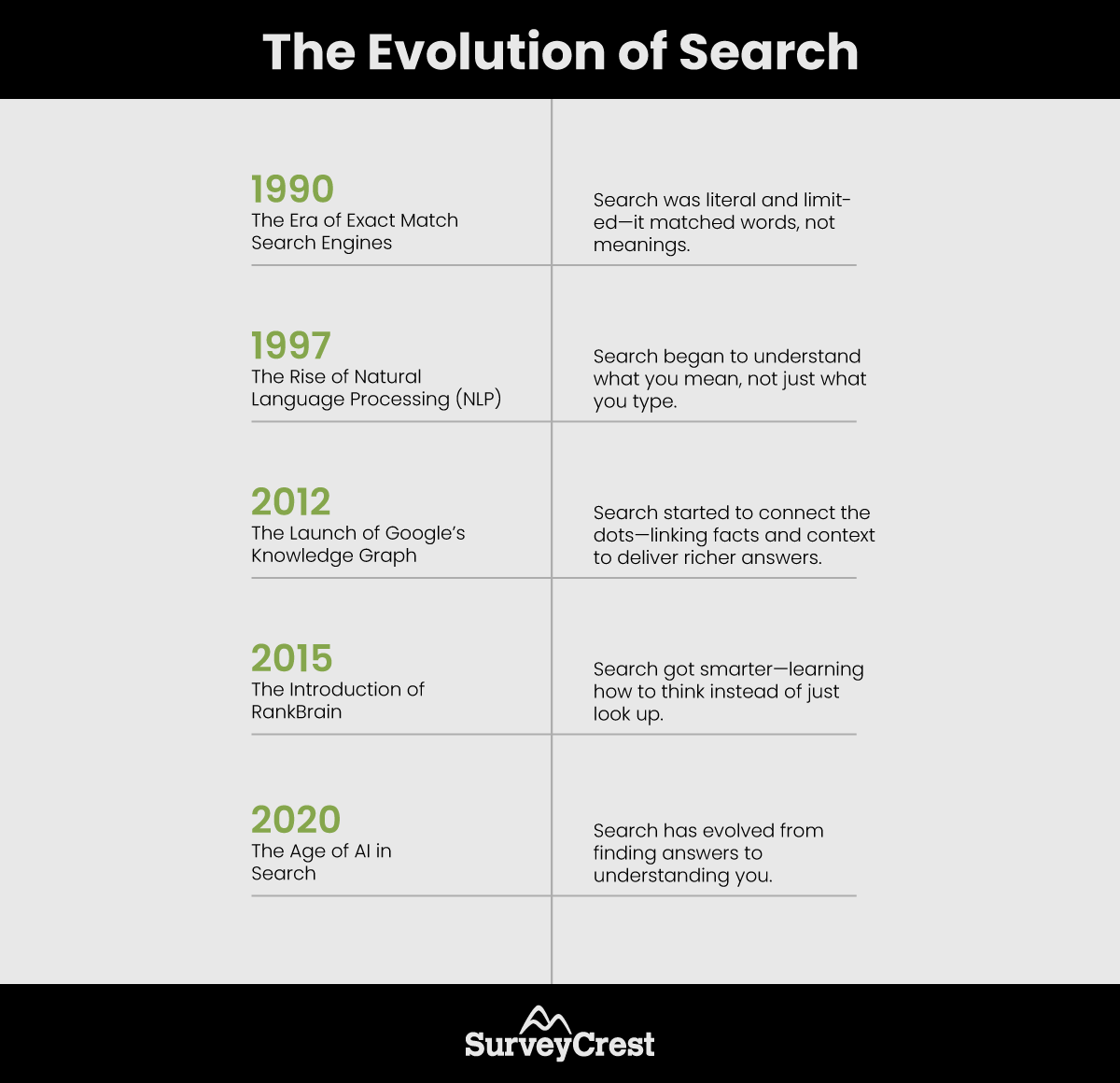
In the early days, when the first search engines like Archie, AltaVista, and Yahoo were launched, they answered only the exact query.

Image Source: wikipedia.org
For instance, if someone searched, “Running shoes,” and another person searched, “Sneakers for running,” the search engine would show different results—it didn’t understand that both meant the same thing.
Similarly, asking “How can creating online forms help make fundraising easy for a non-profit organization?” would only bring up results about non-profits, not related strategies from other industries.
Takeaway:
Search was literal and limited—it matched words, not meanings.
By the late 1990s, Natural Language Processing (NLP) made its way into search technology. This advancement helped search engines understand the context and intent behind a query rather than just matching exact words.
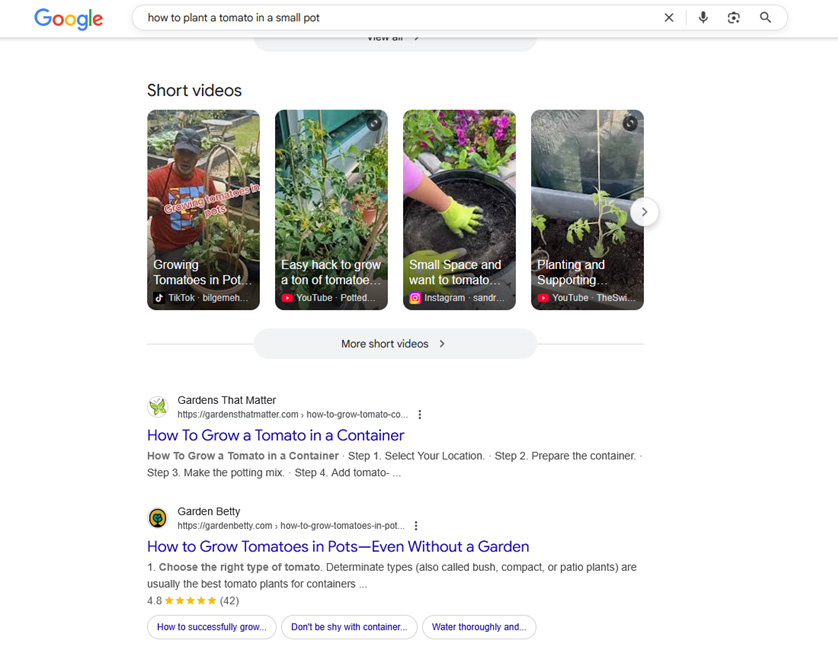
For example, a query like “how to plant a tomato in a small pot” would now trigger results about container gardening, soil mixtures, and watering tips, since the engine understood the broader topic behind the words.
Takeaway:
Search began to understand what you mean, not just what you type.
A major milestone came in 2012 when Google introduced the Knowledge Graph, a massive database storing information about people, places, and things.
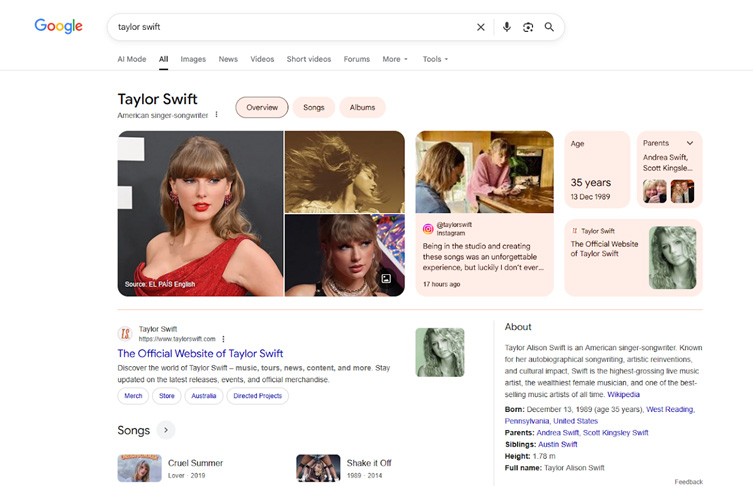
Searching for a personality like Taylor Swift would instantly show details such as her birthday, profession, and career, all drawn from this database. This made search results more connected and informative.
Takeaway:
Search started to connect the dots—linking facts and context to deliver richer answers.
With the rise of machine learning, Google launched RankBrain in 2015. This algorithm helped Google interpret unfamiliar or complex queries—for example, “How to stop the water from boiling at 100°C.” or “What is the distance between Colorado Springs and Denver”
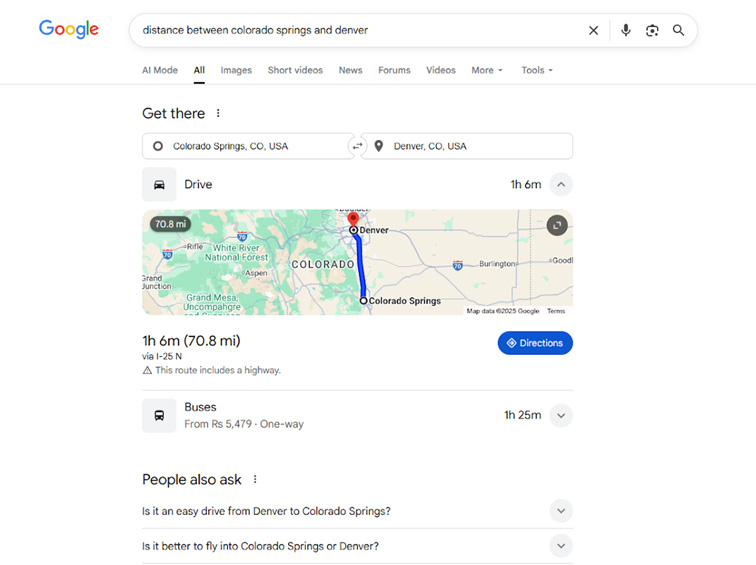
Even without a direct answer, Google could infer intent and offer helpful, related results using predictive understanding.
Takeaway:
Search got smarter—learning how to think instead of just look up.
By 2020, Artificial Intelligence transformed search engines entirely. The decade between 2020 and 2030 is often called the Decade of AI—marked by intelligent algorithms that can summarize content, rank pages, write queries, and even generate answers. The growing AI business trends and models now make search more conversational, personalized, and intuitive than ever before. For example, if you ask “What emotions are associated with the color blue?” or “How do smart cars work?”, you will get a concise AI overview with necessary information.
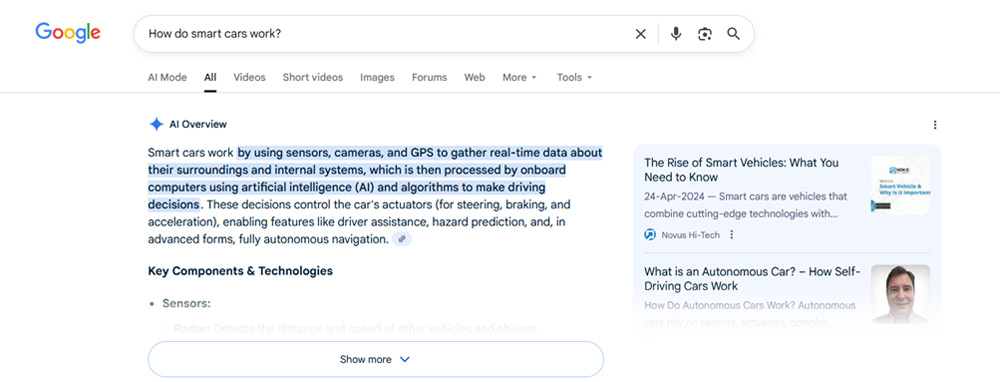
Takeaway:
Search has evolved from finding answers to understanding you.
Nowadays, with the advancements in AI, search is more than you looking for the desired results. Here’s how AI is changing information discovery to understand your preferences and interests.
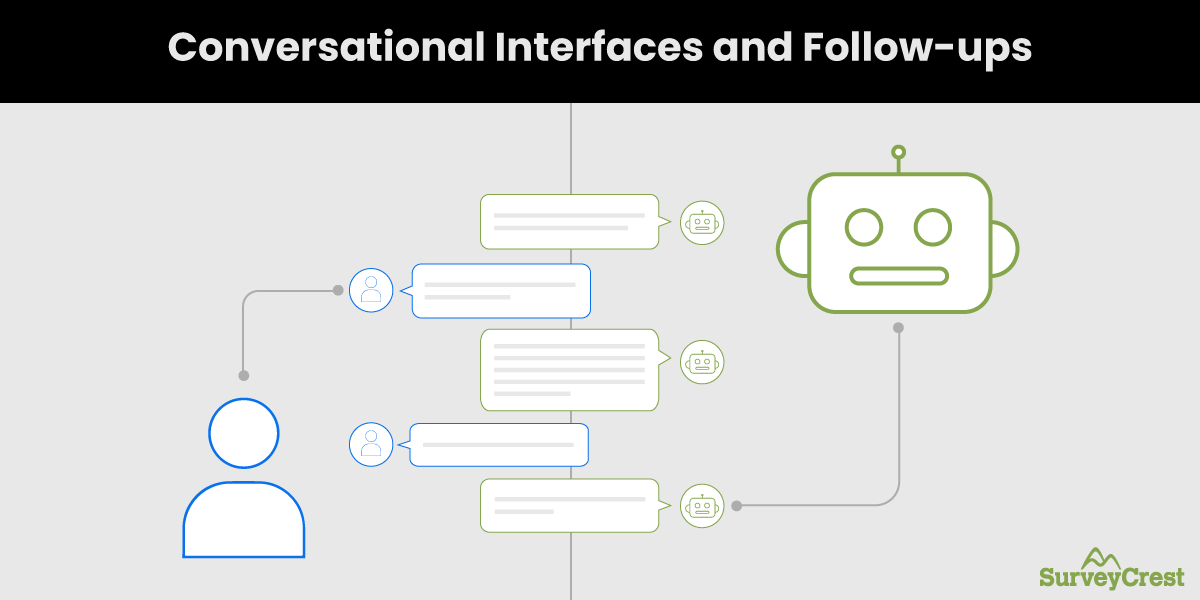
People have grown accustomed to having full conversations with AI instead of typing one-off queries. Search has evolved into a dialogue—where you can ask follow-up questions, refine answers, and explore topics in depth without losing context. Tools such as ChatGPT, Gemini, and Grok have made this style of information discovery feel natural and intuitive.
For example: using OpenAI’s ChatGPT, a conversation might flow like this:
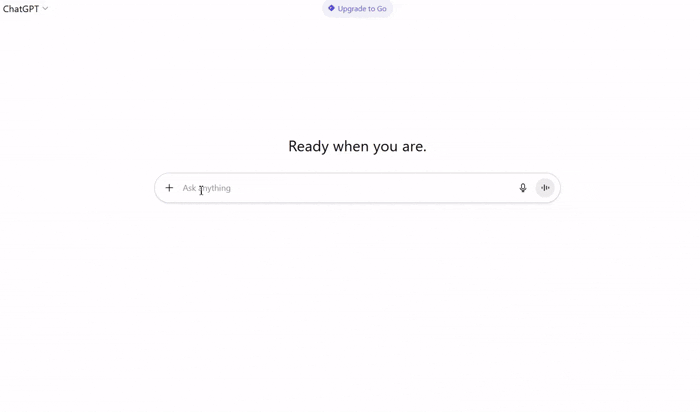
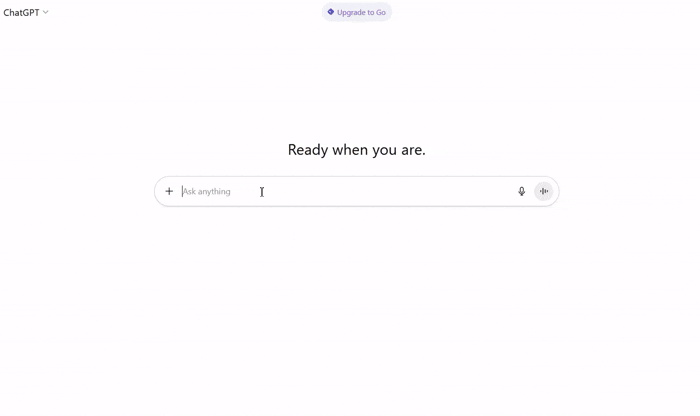
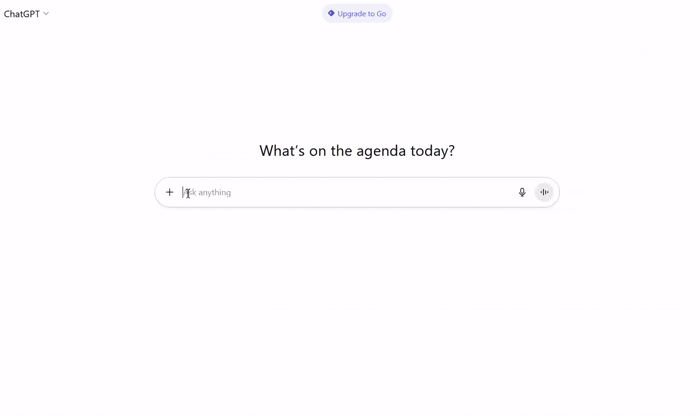
Each question builds on the last, creating a seamless, personalized information journey rather than a series of disconnected searches. Platforms like Indiatimes are adopting similar conversational search experiences, allowing users to explore news, products, and insights through natural dialogue.
For businesses, this shift is transforming how people engage with information. Conversational AI keeps users more invested, delivers context-aware results, and turns passive browsing into active exploration—ultimately deepening brand connection and improving user satisfaction.
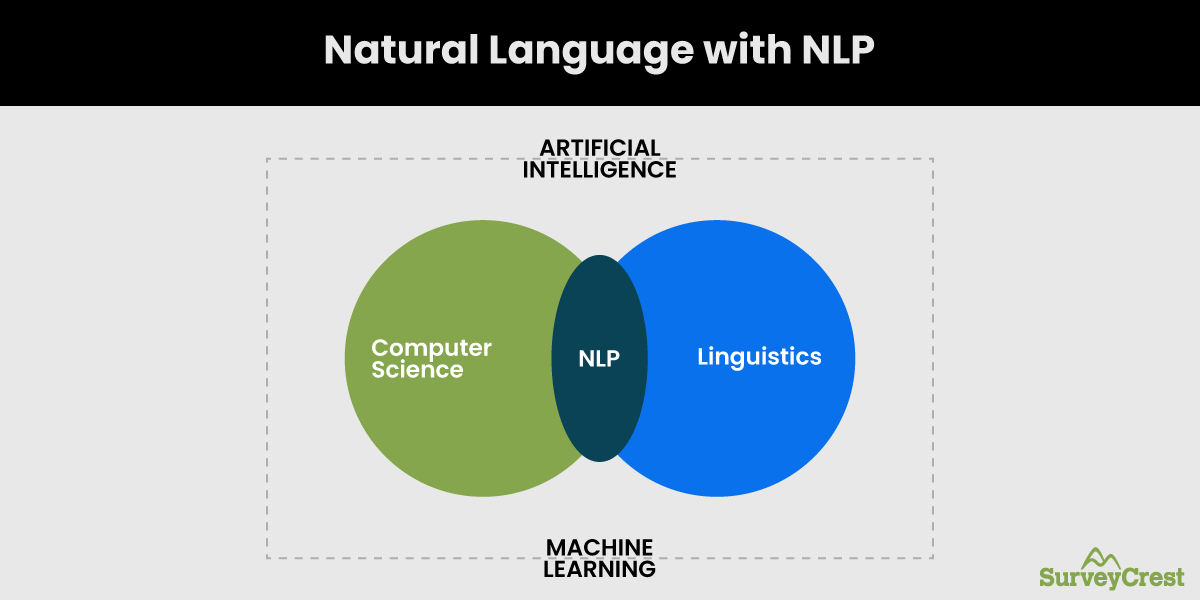
Natural Language Processing (NLP) has enabled search engines and AI tools to understand queries in full, conversational language—much like how humans speak. Instead of relying on short, keyword-based input, users can now ask complete questions or use voice queries, and still get accurate, relevant results. For instance, platforms such as Bloomfire use NLP to help users find insights or resources even when their phrasing is vague or varied.
This advancement has made information discovery far more intuitive. People no longer need to “think like a search engine” to get what they want—they can simply express their thoughts naturally.
For businesses, this means better engagement, as users can interact with knowledge bases, support tools, or product searches in their own language—improving accessibility, customer satisfaction, and overall efficiency.
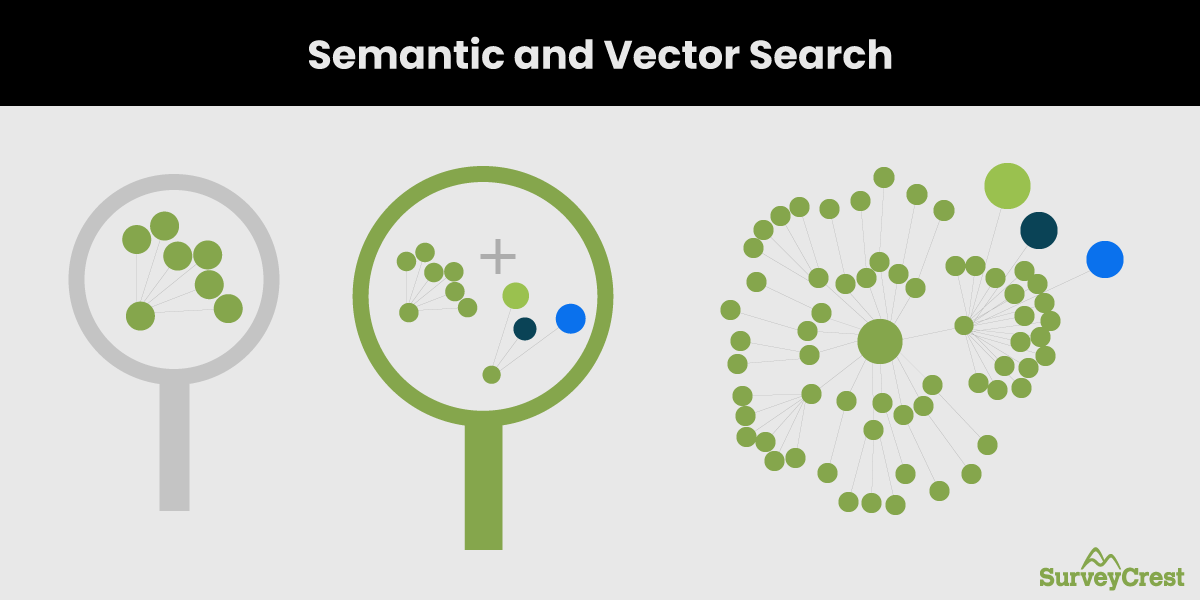
Semantic or vector search has transformed how information is retrieved by focusing on meaning rather than exact words. Instead of matching literal keywords, it uses embeddings and vector representations to understand the intent and context behind a query. This means that even if the words don’t align perfectly, the search engine can still surface relevant results.
The result is a smoother, more intuitive discovery experience—especially useful for ambiguous or exploratory searches.
For businesses, semantic search improves content accessibility, product recommendations, and internal knowledge retrieval. It helps users find what they truly need, not just what they type, reducing friction and increasing satisfaction.
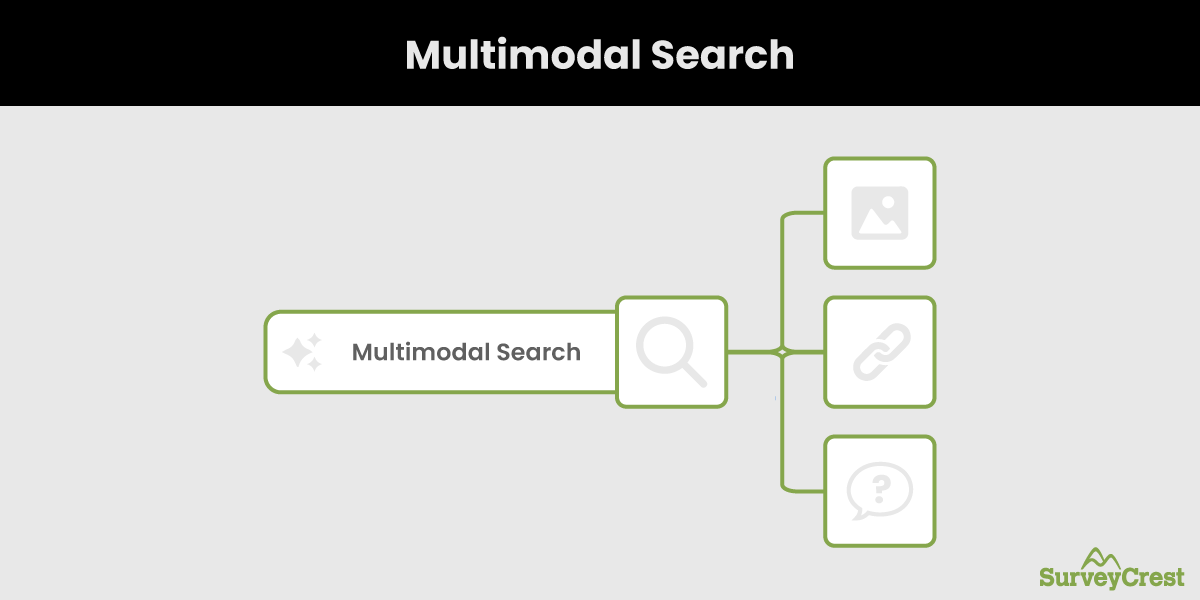
Multimodal search allows users to combine text, voice, image, and video inputs within a single query, creating a richer and more intuitive search experience. Instead of typing alone, people can now speak, upload photos, or mix visual and textual cues to express what they’re looking for. A great example is Google Lens, which lets users point their camera at an object, add a short text description, and instantly receive relevant details or related suggestions.
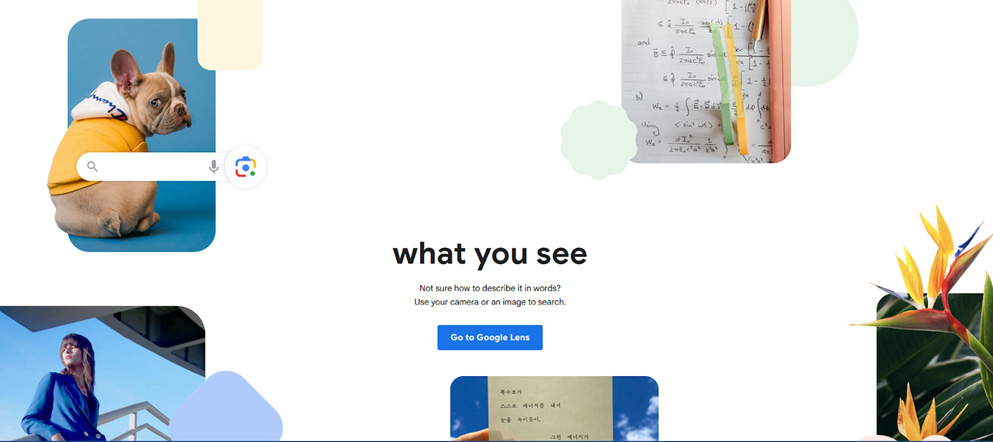
This capability captures deeper user intent and lets people search in the way that feels most natural and convenient.
For businesses, multimodal search enhances product discovery, accessibility, and engagement, helping brands connect with customers through smarter and more human-like interactions.
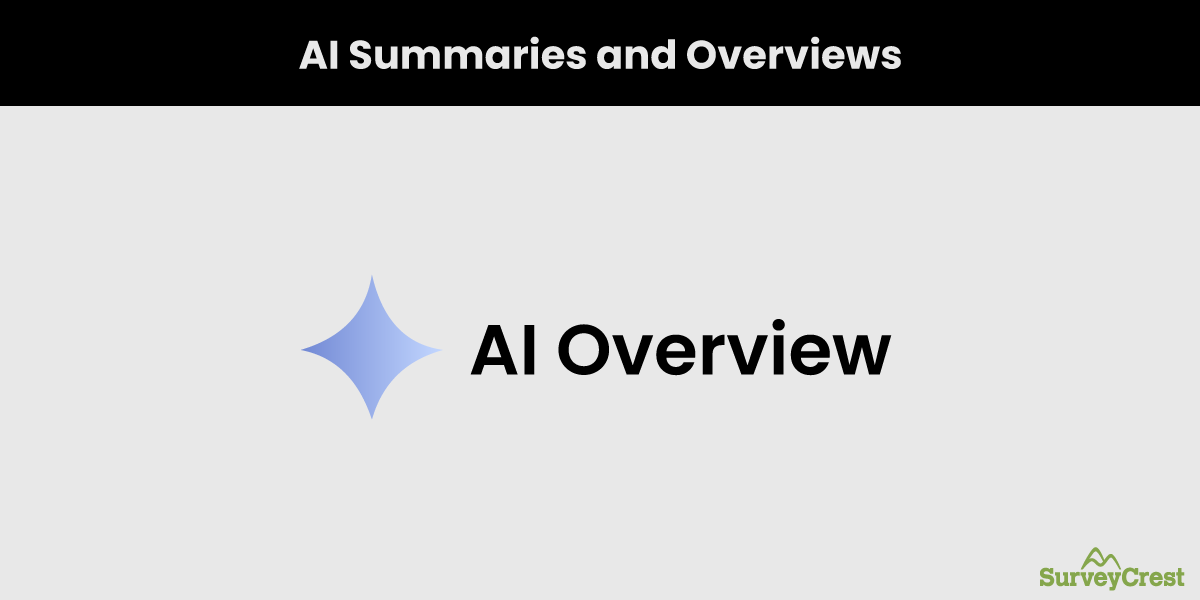
AI-generated summaries or overviews are changing how people consume information online. Instead of sifting through multiple links, users can now see concise, AI-crafted explanations that highlight the key ideas, facts, and sources behind a topic. Google’s “AI Overviews” feature is a great example—it uses generative AI to pull insights from reliable sources and present them in an easy-to-read snapshot, while still linking out for deeper exploration.
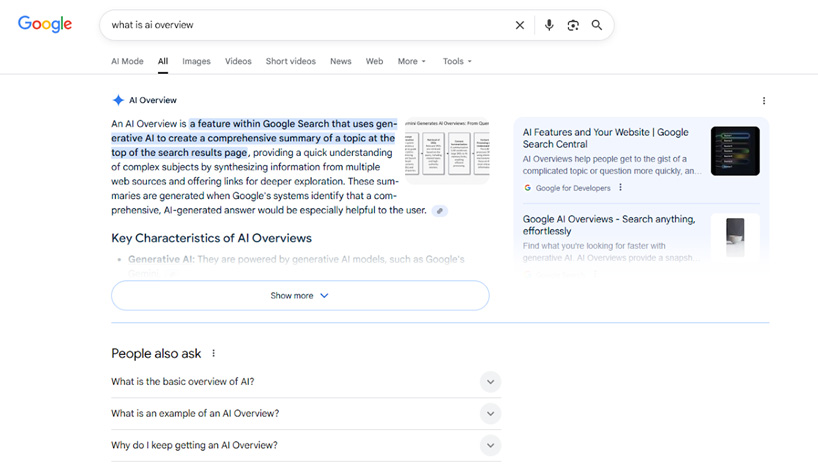
This approach helps users grasp complex topics instantly and make informed decisions faster.
For businesses, AI summaries improve content visibility and user engagement, ensuring that valuable information reaches audiences even when they don’t click through every page—streamlining discovery and enhancing trust.
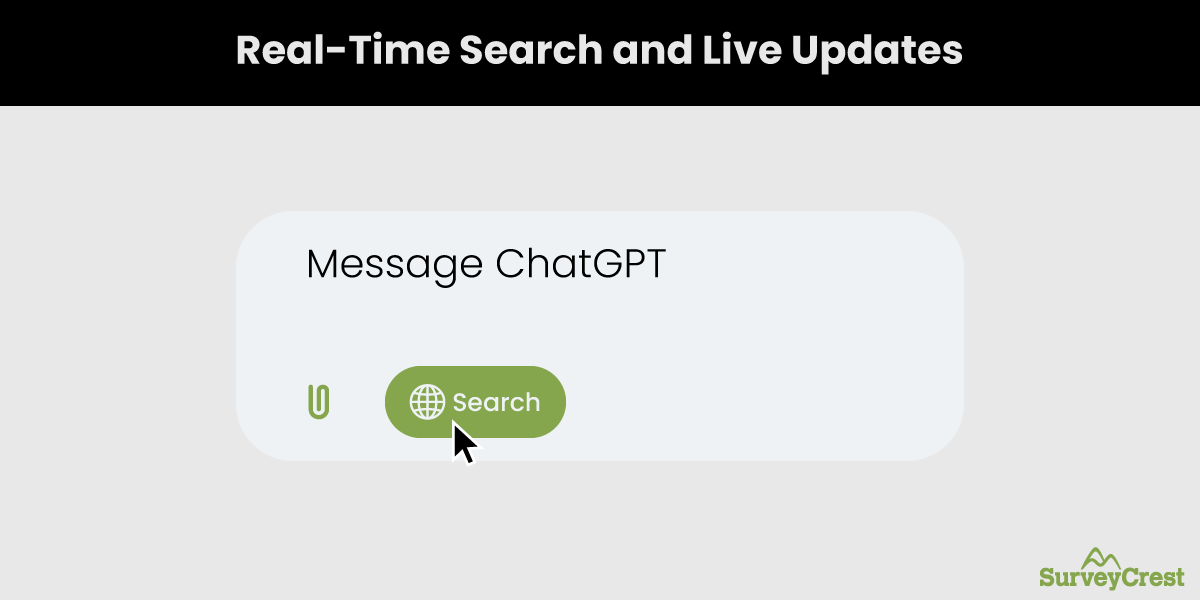
Real-time or live search ensures that the information users see is always current and relevant. Modern search engines now integrate fresh data from news, social media, live events, and user activity, constantly refining results as new information emerges.
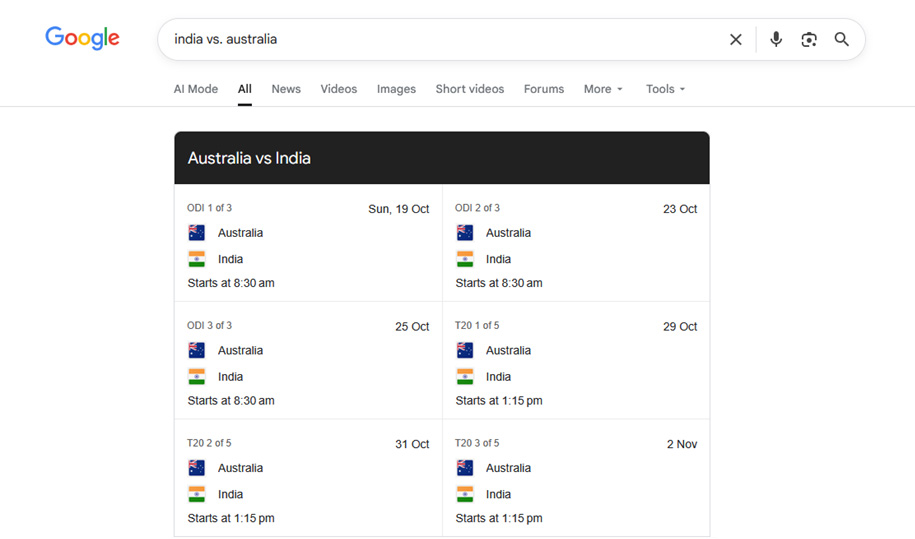
Some systems even offer live conversational modes, allowing continuous refinement of queries as situations evolve—whether it’s tracking a live sports score, market trend, or weather update.
For businesses, this means greater visibility during high-interest moments and more timely engagement opportunities, ensuring their content remains at the center of what’s happening right now.
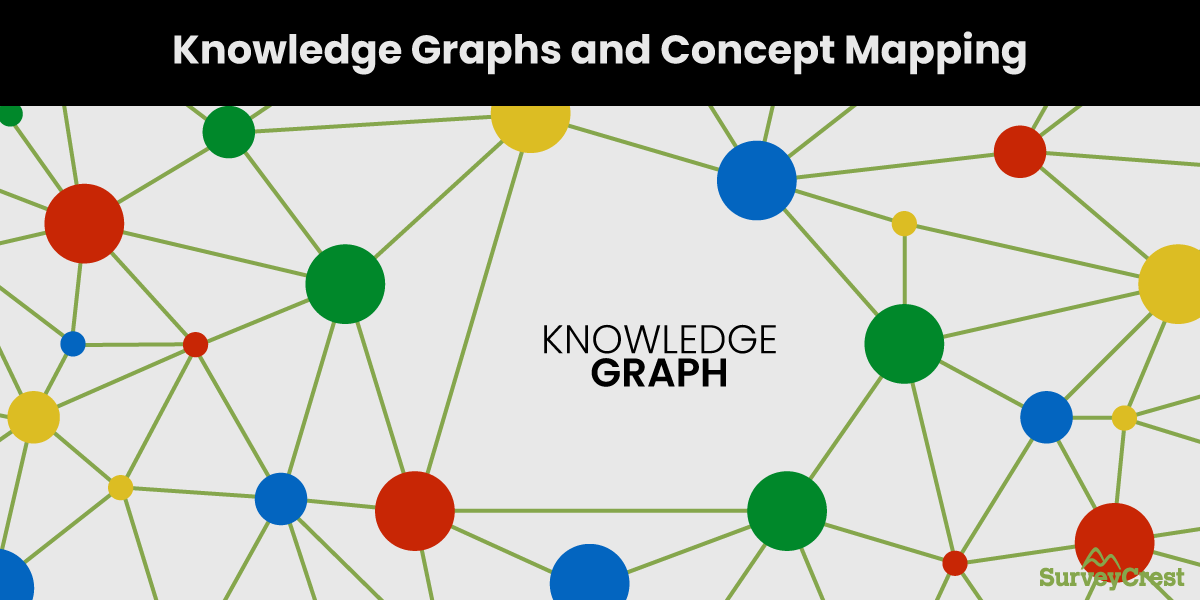
Knowledge graphs and concept mapping allow search engines to understand how people, places, ideas, and topics are interconnected. Instead of treating each query as an isolated request, AI builds a network of related concepts, helping users explore information along meaningful and thematic lines.
This deeper understanding enhances content exploration and multi-step reasoning, enabling users to move seamlessly from one idea to another.
For businesses, it creates opportunities for richer visibility and contextual discovery, as their content can surface in multiple relevant pathways—not just through direct keyword matches.
AI-driven personalization allows search engines and platforms to tailor results and recommendations based on each user’s interests, behavior, and history. By analyzing factors like what you’ve searched for, subscribed to, or interacted with, AI systems can predict what you’re most likely to find valuable next. For example, YouTube suggests videos based on your viewing habits, Spotify curates exclusive playlists inspired by your listening history, and Instagram fills your Explore page with content similar to what you engage with most.
This level of personalization ensures a more relevant and engaging user experience, helping people discover content, products, or insights they didn’t even know they were looking for.

For businesses, it means greater visibility and user retention, as AI helps match the right audience to the right offering at the right time.
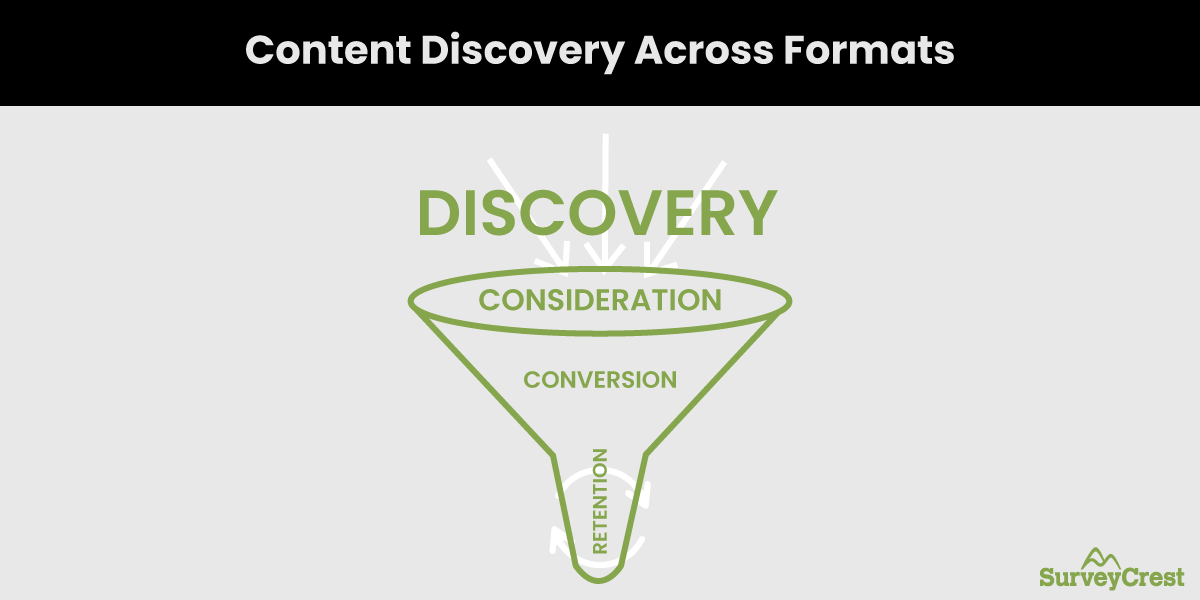
Modern AI-powered search doesn’t stop at matching words—it bridges formats to deliver the most useful type of content for every query. Instead of only retrieving text-based results, it can now surface and combine articles, videos, podcasts, infographics, and interactive tools, depending on what best fits the user’s intent.
This evolution makes content discovery richer and more dynamic, especially for visual or hands-on topics like design, science, or DIY learning.
For businesses, it expands the ways their content can be found and engaged with—ensuring that whether a user prefers to read, watch, or interact, their brand remains visible and accessible across every medium.
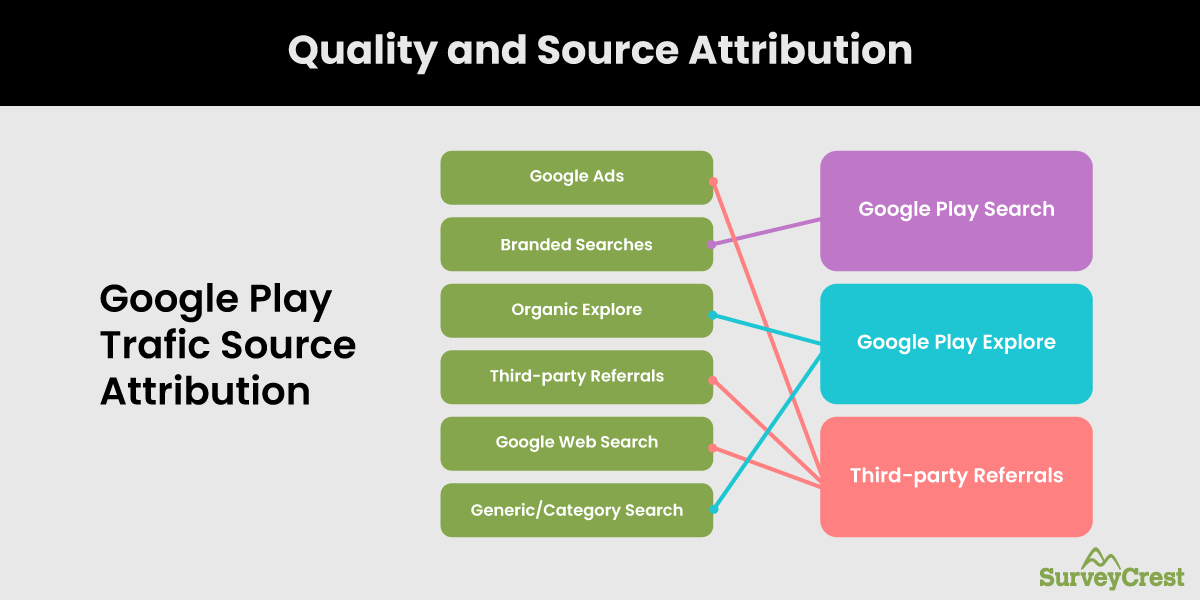
As AI plays a larger role in summarizing and delivering information, trust and transparency have become essential. Modern search systems now include quality and source attribution features that clearly show where information comes from, how credible the source is, and what level of confidence the AI has in its response.
Some platforms also integrate human oversight or fallback mechanisms for critical information, ensuring that sensitive or factual topics aren’t left solely to automation. This emphasis on credibility helps reduce misinformation and AI “hallucinations”, giving users confidence that the content they’re reading is reliable.
For businesses and publishers, maintaining transparent sourcing not only builds user trust but also strengthens brand authority in an increasingly AI-driven search landscape.
As AI continues to revolutionize how people search, learn, and make decisions, it brings not only convenience and speed but also a new set of complex challenges. From credibility and bias to data privacy and loss of authenticity, both users and small businesses are navigating an evolving landscape where algorithms shape what we see—and what we miss. While AI-powered tools promise smarter, more personalized results, they also raise important questions about trust, transparency, and control in the age of automated discovery.
One of the biggest hurdles for users is determining whether AI-generated answers are accurate and trustworthy. A 2024 Pew Research study found that nearly 60% of users struggle to identify if content online is AI-generated or expert-verified. For small businesses, this creates uncertainty about how their content is represented—or even cited—within AI summaries. Without proper attribution, original creators risk losing both visibility and authority, while users may unknowingly rely on incomplete or misrepresented information.
AI systems learn from massive datasets that reflect human and institutional biases, often favoring certain topics, industries, or demographics. As a result, smaller or niche businesses may find their content underrepresented or overlooked in search results. For users, this limits exposure to diverse perspectives and reinforces echo chambers—making information discovery less objective and more algorithmically filtered.
AI-generated overviews condense large volumes of information into brief summaries—but at a cost. These tools can oversimplify complex topics or merge multiple perspectives in ways that blur meaning. Users risk missing nuance or conflicting viewpoints, while small businesses face brand misrepresentation when their content is paraphrased or decontextualized without proper credit.
AI-driven personalization relies heavily on tracking user data—search history, clicks, location, and behavior—to tailor results. While it improves relevance, it also heightens privacy risks. Users may feel uncomfortable with the level of surveillance required, and businesses might struggle to balance personalization with transparency. Moreover, algorithmic filtering can reinforce narrow user profiles, limiting exposure to new products, content, or perspectives.
As AI becomes deeply embedded in major platforms, small businesses are increasingly at the mercy of algorithmic ecosystems. Ranking, visibility, and audience reach can shift overnight due to model updates or policy changes. This dependency reduces control and increases the cost of staying competitive, particularly for smaller brands without the resources to adapt quickly.
In an era dominated by machine-generated text and imagery, maintaining authentic human connection has become more difficult. AI can replicate tone and format—but not emotion, intent, or genuine storytelling. For small businesses built on personality and trust, the challenge is to retain a human touch while leveraging AI tools effectively. For users, this means seeking out experiences that feel real and emotionally engaging amidst a flood of automated content.
AI has already reshaped the foundation of how we search, learn, and access information—turning static keyword searches into dynamic, context-aware experiences. As we move forward, the line between searching, asking, and discovering will blur even more.
Here’s what the future of AI-driven search looks like:
The age of AI is upon us—and it’s here to stay. From intelligent summarization to personalized recommendations, AI has completely transformed how we search, explore, and consume information. These are just a few ways it has redefined our relationship with knowledge and decision-making.
If you haven’t yet started using AI to your advantage, now is the perfect time. Whether you’re a business, a creator, or an everyday user, embracing AI tools can help you uncover insights faster, reach the right audiences, and adapt to changing behaviors.
Kelvin Stiles is a tech enthusiast and works as a marketing consultant at SurveyCrest – FREE online survey software and publishing tools for academic and business use. He is also an avid blogger and a comic book fanatic.